How To: Overclocking Your AMD Processor
Easy Multiplier Overclocking (Cont.)

Now that we've walked through the steps to overclocking the Phenom II X4 940, let’s take a look at the results attained with the other three CPUs.
The two other AM2+ processors will follow the same rules that the Phenom II does, except we take one extra step and enable Advanced Clock Calibration (ACC). ACC will only be available on a motherboard with AMD's SB750 southbridge, such as this 790GX-based ASUS platform we're using. It can be enabled within the BIOS or within AOD, but requires a reboot for the changes to take effect.
With the 45 nm Phenom II, it is better to just leave ACC disabled, since AMD claims that the feature's benefits are already baked in to its Phenom II silicon. But with the 65 nm K10 Phenom and Athlon processors, setting ACC to Auto, +2%, or +4% can often help stretch the maximum attainable core speeds of the chip:

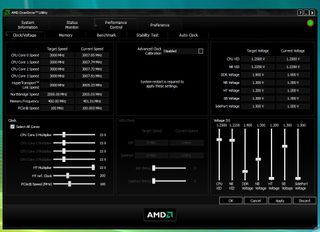
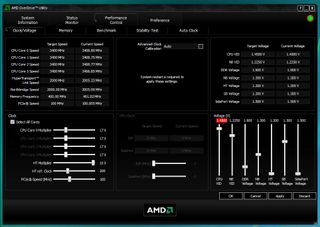
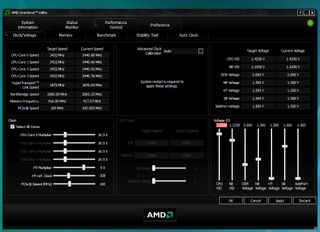
The screen shots above show how our Phenom X4 9950 runs at 2.6 GHz with a 13x multiplier and CPU VID of 1.25 V. The memory frequency is crossed out, as it was set to DDR2-1066 and not the DDR2-800 used once overclocking began. The multiplier was raised to 15x for a 400 MHz overclock at stock voltage. Voltage was pushed to 1.45 V, ACC was enabled and set to Auto, +2%, and +4%, but Prime95 would only run for about 12-15 minutes. Interestingly, with ACC set to Auto, a 16.5x multiplier, and 1.425 V, the reference clock was raised all the way to 208 MHz, resulting in an even higher stable overclock.


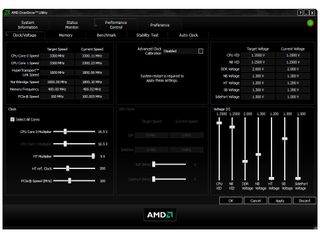
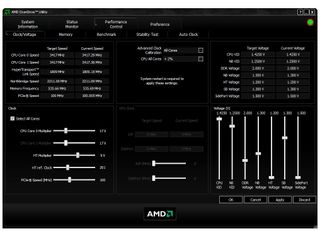
Our Athlon X2 7750 has a stock core speed of 2,700 MHz and a CPU VID of 1.325 V. Without a voltage boost, we were able to bump the multiplier to 16x for a stable 3,200 MHz. The system was stable at 3,300 MHz with just a slight bump to 1.35 V. With ACC still disabled, Core VID was raised all the way to 1.45 V in .025 V increments, but the system was far from stable with a 17x multiplier. It even crashed prior to any torture testing. Setting ACC at all cores at +2%, we reached an hour of Prime95 stability at 1.425 V. This processor didn’t play nicely with voltages over 1.425 V, so the maximum stable easy overclock achieved was 3,417 MHz.
The benefits attained through enabling ACC will, like overclocking on the whole, vary greatly from chip to chip. It’s a valuable tweak to have as an option and can take a serious amount of time to fine tune for each core. While we didn’t get a large boost from ACC with either of these two processors, take a look back at our 790GX introduction for more information on ACC and the much larger impact it had for the Phenom X4 9850 used in that article.
Stay on the Cutting Edge
Join the experts who read Tom's Hardware for the inside track on enthusiast PC tech news — and have for over 25 years. We'll send breaking news and in-depth reviews of CPUs, GPUs, AI, maker hardware and more straight to your inbox.
Current page: Easy Multiplier Overclocking (Cont.)
Prev Page Easy Multiplier Overclocking Next Page Overclocking Your K8 ProcessorMost Popular

